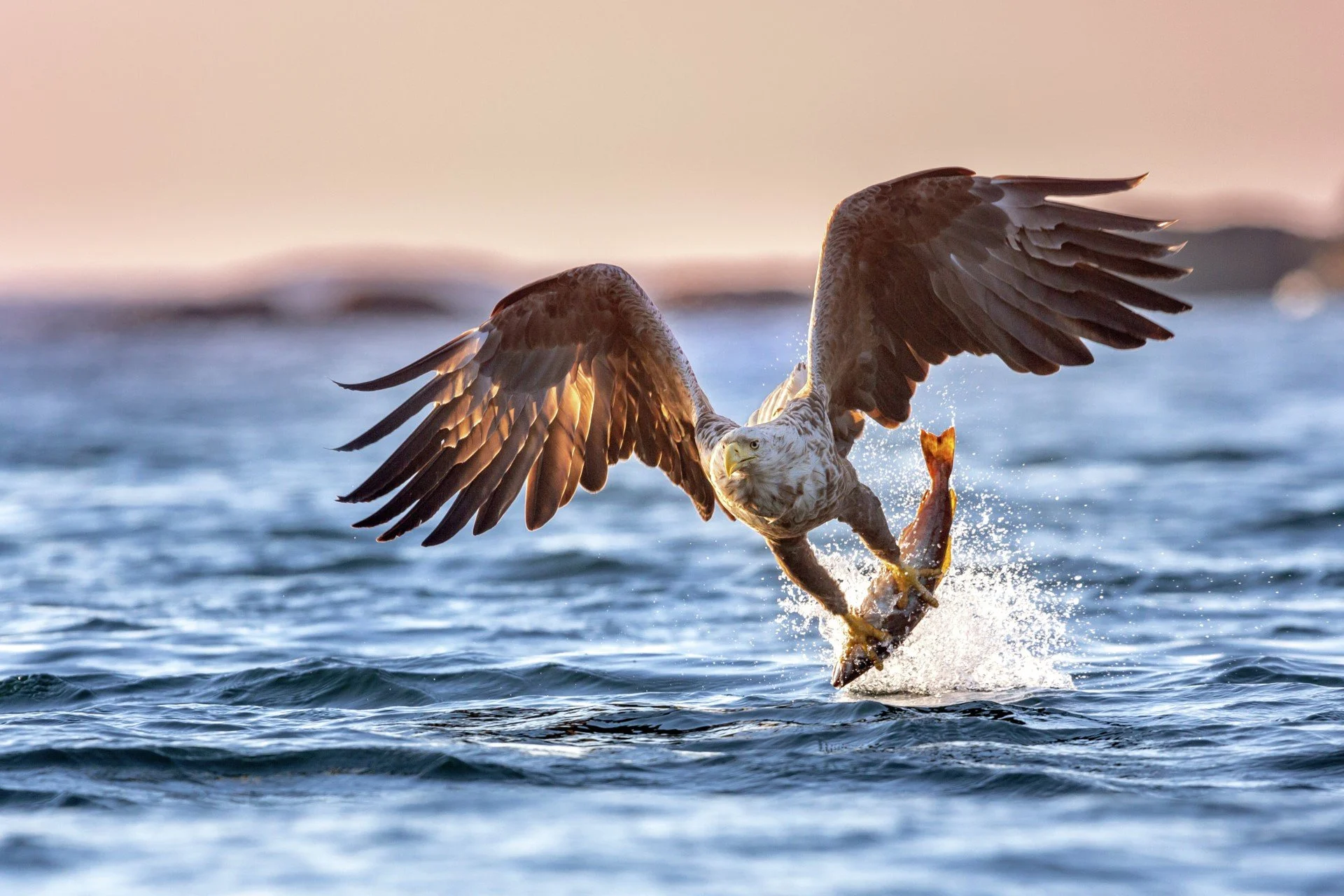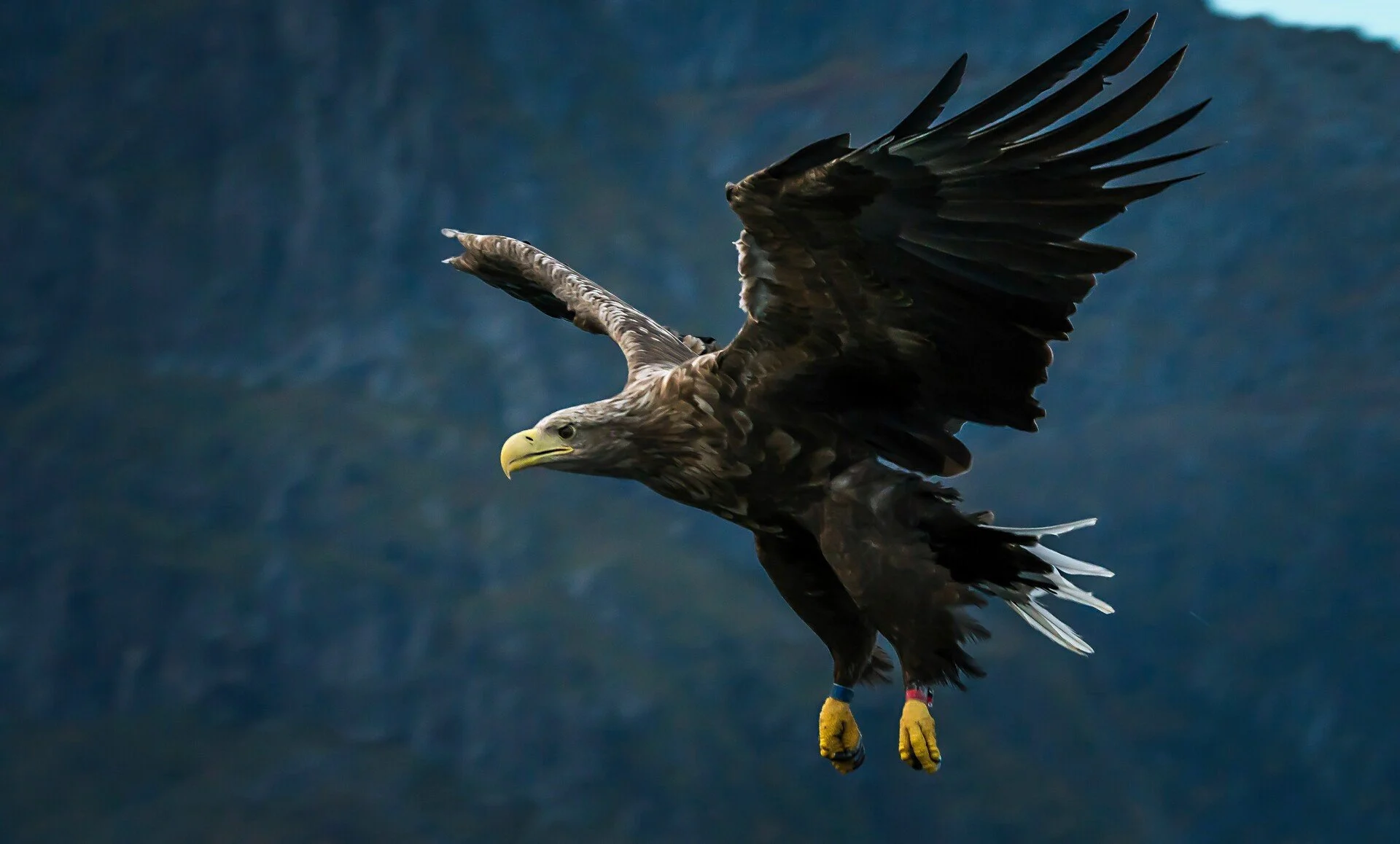The king of the skies: the sea eagle
Watching this majestic bird soar above while you are on deck may well make you wish you could fly yourself.

A mighty bird
With a wingspan of up to 2.65 metres, the White-tailed Eagle (Haliaeetus albicilla) – also known as the sea eagle – is the largest bird of prey in Norway. As their name suggests, their tails are white and have a distinctive wedge shape. Scientists believe that they can carry up to double their own weight – and the heaviest sea eagle ever recorded was a whopping 7 kg.
Sea eagles prey mainly on fish, small mammals, and other seabirds. They build their nests in treetops or mountainsides, usually sticking to the same nest for several breeding seasons. They normally lay two eggs; the chick comes out after 38 days, and leaves the nest after 10–11 weeks.


A protected species
Aside from Norway, the sea eagle is found across a wide area that spans from Greenland and Iceland to Iraq in the south, across Central and Northern Asia and all the way to the Pacific. In the UK, these birds of prey can be found along the west coast of Scotland and Isle of Mull. A project run by the Forestry Commission and Roy Dennis Wildlife Foundation is also underway on the Isle of Wight to reintroduce White-tailed Eagles, with the first six birds being released in August 2019.
Today, the sea eagle is a protected species both in Norway and most countries in Western Europe. From what is believed to have been a low point of approximately 500 breeding couples in Western Europe in 1975, Norway alone now has more than 2,000.
Where can I see a White-tailed Eagle?
While on a Hurtigruten voyage along the Norwegian coast, you can join one of our scenic trips into the majestic Trollfjord to witness these incredible birds in the wild.
On deck, as we sail through the bird’s natural habitat, close encounters between human and eagle are not uncommon.
Only when you see these majestic birds with your own eyes, soaring above the ship, do you realise how big they really are.